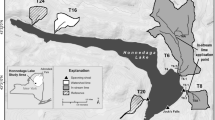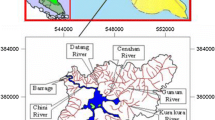Abstract
Despite a slight reduction in the level of acidic deposition in Norway, acidification of lakes and rivers continues. The Norwegian Liming Project (1979–84) demonstrated that lime treatment can be an effective measure against acidification of watercourses given appropriate adaptation to local conditions. Liming in Norway is difficult because of (1) large amounts of precipitation, (2) short retention time of lakes, and (3) episodic changes in water chemistry. In 1988 NOK 14 mill. has been allocated to operational liming and research. We report here on chemical and biological responses from lime treatment of a lake, a river and a catchment. Lake Store Hovvatn was limed in 1981 and successfully stocked with brown trout. Before reliming in 1987, fish growth had ceased, but increased post liming. The River Audna has been continuously limed since 1985. Sea trout fisheries have improved, and the stocking of Atlantic salmon smolts at the mouth of the river in 1986 has already resulted in the return of spawners. Liming of the entire terrestrial catchment to the pond Tjønnstrond in 1983 by helicopter was also successful; stocked brown trout have survived to the present.
Similar content being viewed by others
Rights and permissions
About this article
Cite this article
Rosseland, B.O., Hindar, A. Liming of lakes, rivers and catchments in Norway. Water Air Soil Pollut 41, 165–188 (1988). https://doi.org/10.1007/BF00160350
Issue Date:
DOI: https://doi.org/10.1007/BF00160350




